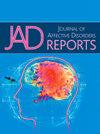Study on the prediction model of non-suicidal self-injury behavior risk during hospitalization for adolescent inpatients with depression based on medical data.
Q3 Psychology
引用次数: 0
Abstract
Purpose
To develop a predictive model for identifying risk factors of non-suicidal self-injury (NSSI) during hospitalization in adolescents. By analyzing 1242 inpatient records, we explored NSSI risk factors in depressed adolescents and established a clinical predictive nomogram.
Methods
We collected electronic medical records from the First Affiliated Hospital of Zhengzhou University from January 2021 to May 2023. The least absolute shrinkage and selection operator (LASSO) regression with tenfold cross-validation was used for variable selection. Multivariable logistic regression was then applied to build the predictive model. A nomogram was developed based on the selected variables and validated using a calibration plot, receiver operating characteristic curve (ROC), and decision curve analysis (DCA). External validation was also performed.
Results
Six predictors were identified: sex, self-injury within 1 month before hospitalization, current course, history of attempted suicide, with suicide idea, and history of self-injury. The nomogram showed satisfactory discrimination in both the training (AUC 0.927; 95% CI: 0.844-0.905) and validation (AUC 0.907; 95% CI: 0.879-0.902) sets. Decision curve analysis(DCA) indicated clinical utility when the risk threshold was between 15% and 83%, with external validation confirming this range as 17% to 80%.
Conclusion
We developed a nomogram to predict NSSI risk in hospitalized adolescent inpatients with depression. The nomogram demonstrated favorable calibration and discrimination, aiding clinicians in identifying at-risk inpatients and facilitating timely interventions, providing a reference for future prevention.
基于医学数据的青少年抑郁症住院患者住院期间非自杀自伤行为风险预测模型研究
目的建立青少年住院期间非自杀性自伤危险因素的预测模型。通过分析1242例住院患者的记录,我们探讨了抑郁青少年自伤的危险因素,并建立了临床预测图。方法收集郑州大学第一附属医院2021年1月至2023年5月的电子病历。最小绝对收缩和选择算子(LASSO)回归与十倍交叉验证用于变量选择。然后应用多变量逻辑回归建立预测模型。根据所选变量建立nomogram,并使用校准图、受试者工作特征曲线(ROC)和决策曲线分析(DCA)进行验证。还进行了外部验证。结果确定了6项预测因素:性别、住院前1个月内自伤、目前病程、自杀未遂史、有自杀念头和自伤史。nomogram在training (AUC 0.927;95% CI: 0.844-0.905)和验证(AUC 0.907;95% CI: 0.879-0.902)组。决策曲线分析(DCA)表明,当风险阈值在15%至83%之间时,临床实用性,外部验证确认该范围为17%至80%。结论我们建立了一种预测青少年抑郁症住院患者自伤风险的nomogram方法。该图显示了良好的校准和辨别能力,有助于临床医生识别有风险的住院患者,促进及时干预,为今后的预防提供参考。
本文章由计算机程序翻译,如有差异,请以英文原文为准。
求助全文
约1分钟内获得全文
求助全文
来源期刊

Journal of Affective Disorders Reports
Psychology-Clinical Psychology
CiteScore
3.80
自引率
0.00%
发文量
137
审稿时长
134 days
 求助内容:
求助内容: 应助结果提醒方式:
应助结果提醒方式:


